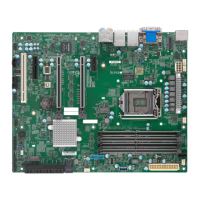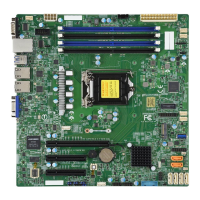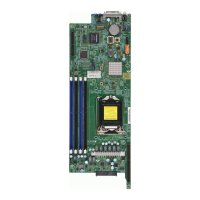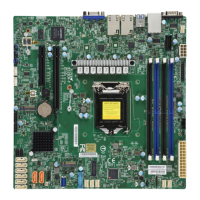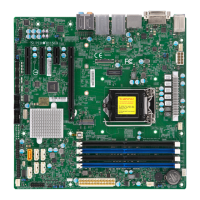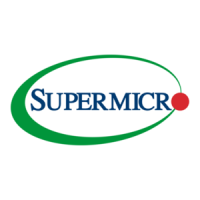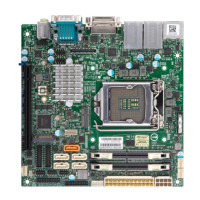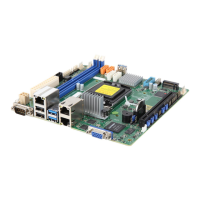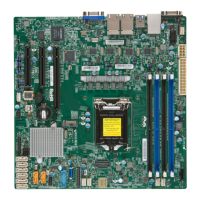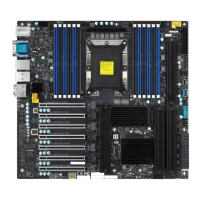17
Chapter 1: Introduction
Motherboard Features
Peripheral Devices
•
Two (2) USB 2.0 ports on the back I/O panel (USB0/1)
• Two (2) USB 3.1 Gen 1 ports on the back I/O panel (USB4/5)
• One (1) front accessible USB 2.0 header with two (2) USB connections (USB2/3)
• One (1) front accessible USB 3.1 Gen 1 header with two (2) USB connections (USB6/7)
• One (1) USB 3.1 Gen 1 Type-A header (USB8)
BIOS
•
256Mb AMI BIOS
®
SPI Flash BIOS
• ACPI 6.0 or later, PCI F/W 3.0 or later, Plug and Play (PnP), SPI dual speed support, riser card auto detection support,
SMBIOS 2.7 or later, real time clock (RTC) wakeup
Power Management
•
ACPI power management
• Power button override mechanism
• Wake-on-LAN
• Power-on mode for AC power recovery
• Power supply monitoring
System Health Monitoring
•
Onboard voltage monitoring for +1.8V, +3.3V, +5V, +12V, +3.3V stdby, +5V stdby, VBAT, CPU, memory, PCH temperature,
system temperature, and memory temperature
• 6 CPU switch phase voltage regulator
• CPU thermal trip support
• Platform Environment Control Interface (PECI)
Fan Control
•
Fan status monitoring via IPMI connections
• Dual cooling zones
• Multi-fan speed control support through onboard BMC
• Six (6) 4-pin fan headers
System Management
•
Trusted Platform Module (TPM) support
• SuperDoctor® 5
• Watchdog, Non-maskable Interrupt (NMI), RoHs
• Chassis intrusion header and detection
• Server Platform Service
LED Indicators
•
CPU/system overheat LED
• Power LED
• Fan failed LED
• UID/remote UID
• HDD activity LED
• LAN activity LED
Notes: The table above is continued on the next page.
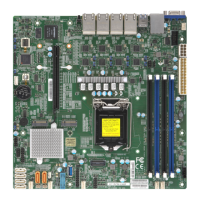
